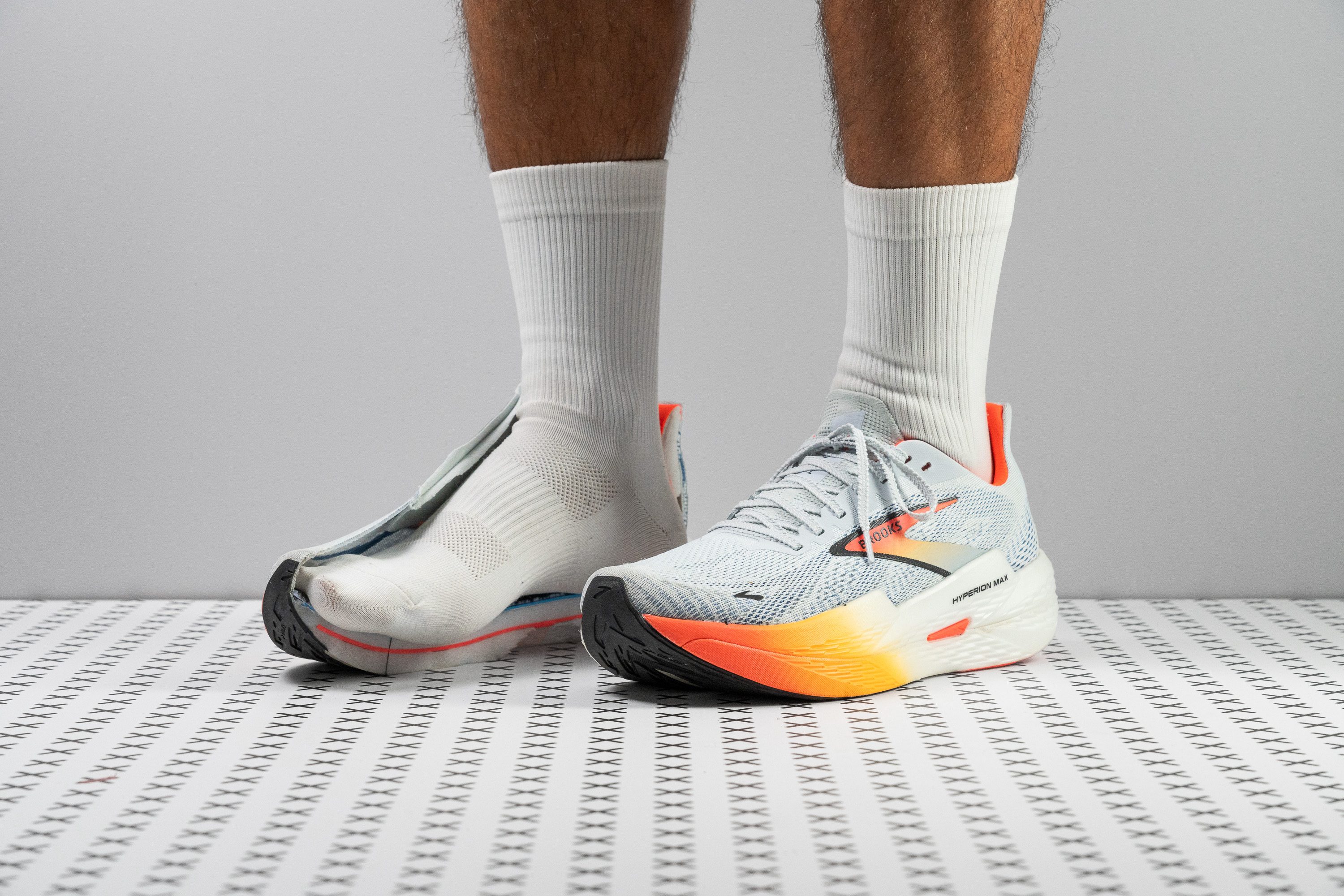Our verdict
Pros
- Enhanced stability
- Better durability
- Improved midsole
- Ready for long runs
- Amazing for tempo workouts
- Finally comes with a gusseted tongue
- Comfortable for easy paces
- Premium notched laces
- Premium notched laces
Cons
- Still lacks energy return
- Significant increase in weight
- Limited breathability
- Minor price increase from v1
Audience verdict
- Top 20% most popular running shoes
Comparison
The most similar running shoes compared
+ + Add a shoe | |||||
|---|---|---|---|---|---|
| Audience score | 88 Great! | 90 Superb! | 79 Good! | 84 Good! | |
| Price | £180 | £110 | £170 | £135 | |
| Pace | Tempo | Daily runningTempo | Daily runningTempo | Daily runningTempo | |
| Shock absorption | Moderate | High | High | Moderate | |
| Energy return | Moderate | Moderate | Moderate | Low | |
| Traction | High | High | High | High | |
| Arch support | Neutral | Neutral | Neutral | Neutral | |
| Weight lab Weight brand | 9.2 oz / 262g 9.2 oz / 261g | 8.6 oz / 245g 8.4 oz / 238g | 10 oz / 283g 9.9 oz / 281g | 7.7 oz / 217g 7.6 oz / 215g | |
| Lightweight | ✗ | ✓ | ✗ | ✓ | |
| Drop lab Drop brand | 6.8 mm 6.0 mm | 8.2 mm 9.0 mm | 10.6 mm 6.0 mm | 5.9 mm 5.0 mm | |
| Strike pattern | Mid/forefoot | HeelMid/forefoot | Heel | Mid/forefoot | |
| Size | True to size | Half size small | True to size | Half size small | |
| Midsole softness | Balanced | Balanced | Soft | Soft | |
| Difference in midsole softness in cold | Small | Small | Small | Small | |
| Toebox durability | Decent | Bad | Good | Bad | |
| Heel padding durability | Decent | Good | Decent | Good | |
| Outsole durability | Good | Decent | Good | Decent | |
| Breathability | Moderate | Breathable | Moderate | Breathable | |
| Width / fit | Medium | Wide | Medium | Wide | |
| Toebox width | Medium | Medium | Medium | Wide | |
| Stiffness | Stiff | Moderate | Moderate | Moderate | |
| Torsional rigidity | Stiff | Moderate | Stiff | Stiff | |
| Heel counter stiffness | Moderate | Flexible | Moderate | Moderate | |
| Rocker | ✓ | ✗ | ✓ | ✗ | |
| Heel lab Heel brand | 33.2 mm 37.0 mm | 34.9 mm 35.0 mm | 45.6 mm 46.0 mm | 32.8 mm 34.5 mm | |
| Forefoot lab Forefoot brand | 26.4 mm 31.0 mm | 26.7 mm 26.0 mm | 35.0 mm 40.0 mm | 26.9 mm 29.5 mm | |
| Widths available | NarrowNormal | NormalWide | Normal | Normal | |
| Orthotic friendly | ✓ | ✓ | ✓ | ✓ | |
| Season | All seasons | SummerAll seasons | All seasons | SummerAll seasons | |
| Removable insole | ✓ | ✓ | ✓ | ✓ | |
| Ranking | #255 Top 39% | #46 Top 13% | #320 Bottom 14% | #248 Bottom 33% | |
| Popularity | #129 Top 20% | #155 Top 42% | #46 Top 13% | #132 Top 36% |
Who should buy
We've discovered in the lab that the Hyperion Max 2 is an outstanding choice for:
- Fans of the Brooks Hyperion Elite 4 seeking a dependable training companion for long runs and tempo training, as it features the same midsole technology and offers a similar ride.
- Midfoot and forefoot strikers in search of a stable shoe versatile enough for everything from easy long runs to intense interval workouts.
- Runners who prefer a plated shoe but want to steer clear of max-stacked models and carbon plates, finding this option more grounded and flexible.
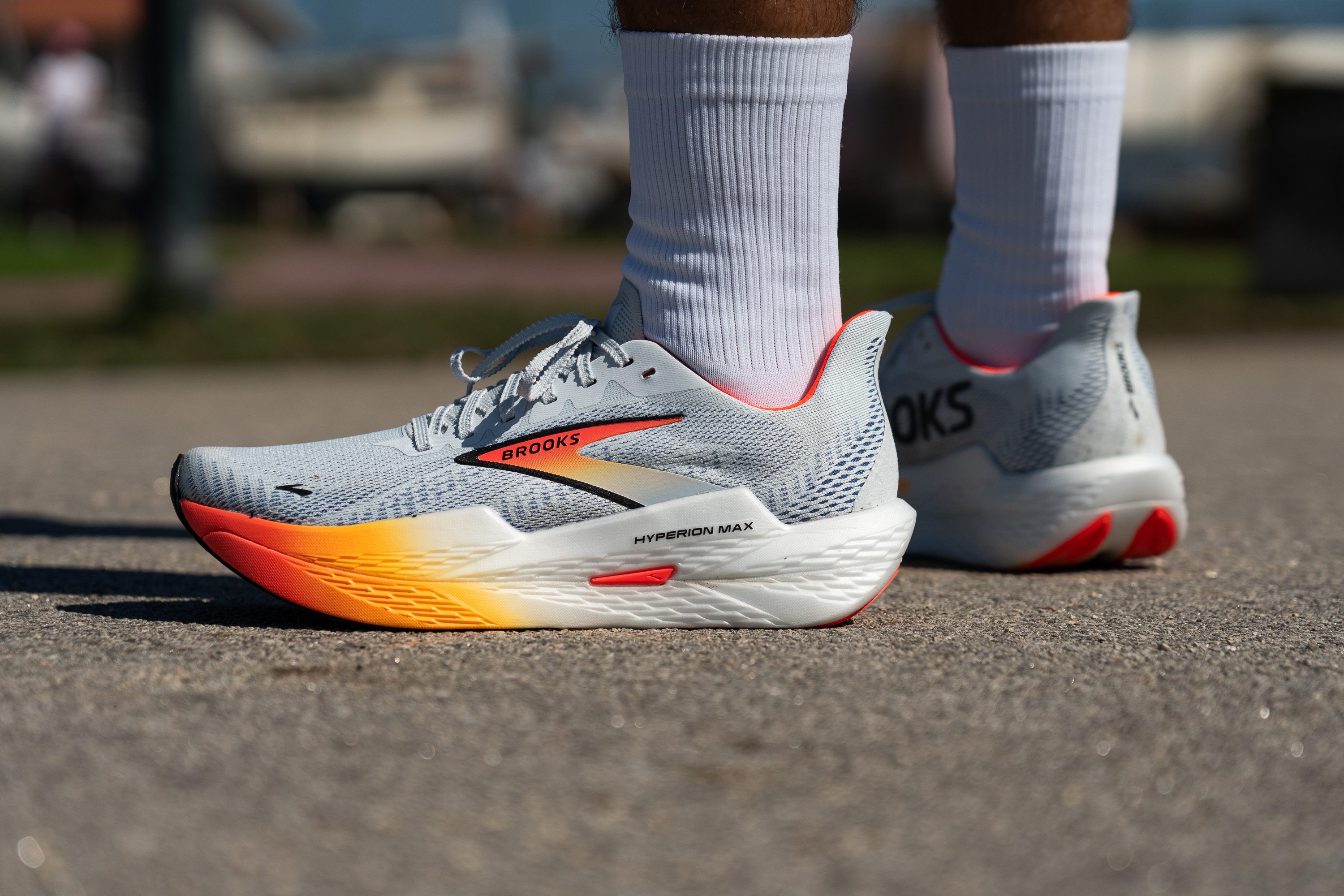
Who should NOT buy
We found that the Hyperion Max 2 has undergone significant changes from its predecessor—however, not all modifications have proven beneficial. In our experience, the shoe has gained too much weight, which might not appeal to everyone, particularly those looking for lighter tempo trainers like the Saucony Endorphin Speed 4.
Additionally, at a price point of £180, we believe a top-tier foam should be expected, yet the DNA Flash v2 does not meet this criteria for us. For runners seeking the ultimate in energy return within a performance trainer, we suggest alternatives like the ASICS Superblast 2 or the PUMA Deviate Nitro 3.
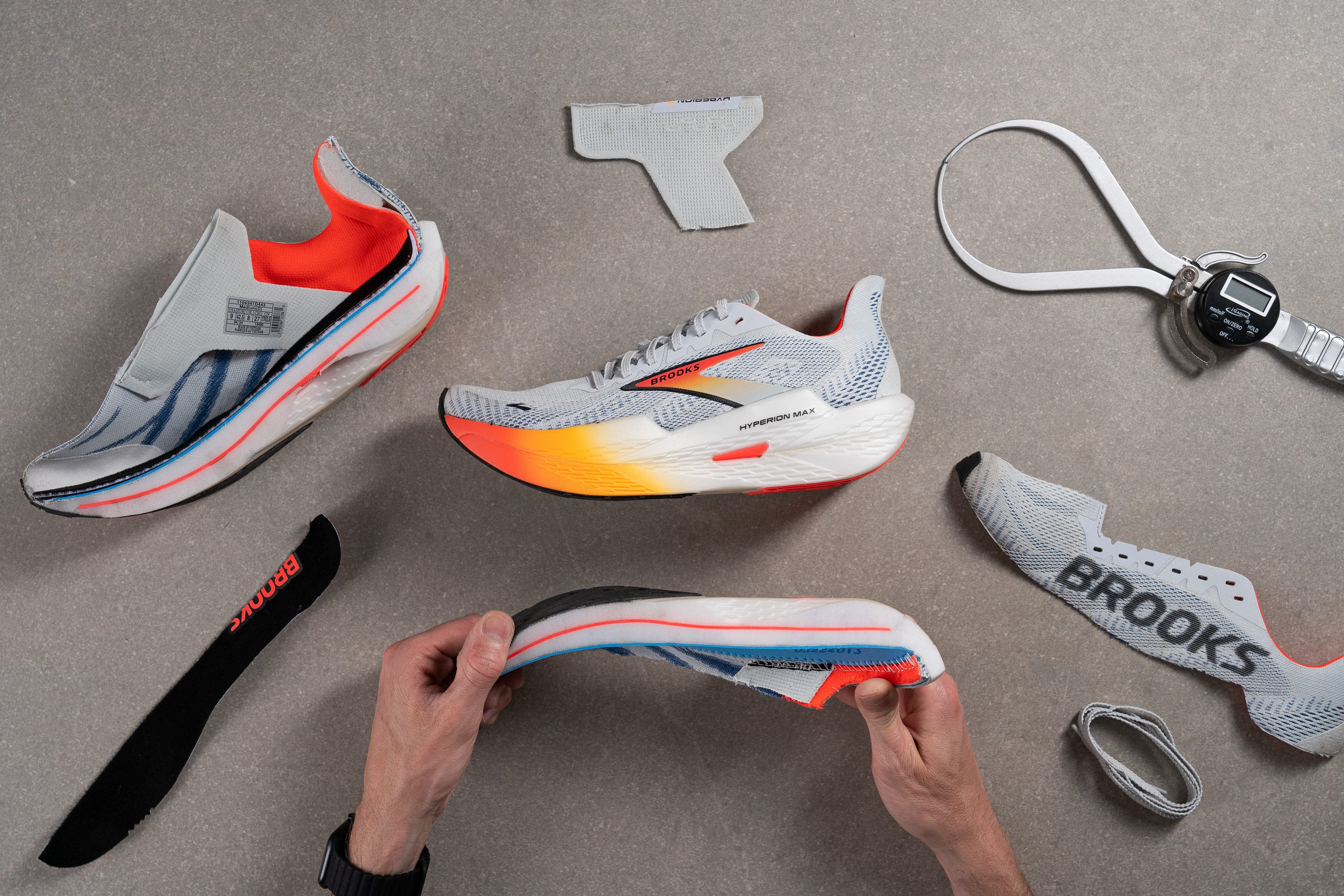
Cushioning
Shock absorption
The Hyperion Max 2 continues to cause some confusion with its name, since despite the “Max” label, it’s far from a max-cushion shoe.
Our lab tests confirmed it: 130 SA in the heel and 106 SA in the forefoot put it right in line with average daily trainers like the Pegasus or Supernova. But hey, it’s a Hyperion—why would we even want 40 mm under the heel? No thanks!

| Hyperion Max 2 | 130 SA |
| Average | 129 SA |
Energy return
We asked for better energy return in this update from version 1, and Brooks delivered. Bounce improved to 57.0% in the heel and 62.4% in the forefoot. Those are still average figures, but no longer the underwhelming results of its predecessor.
| Hyperion Max 2 | 57.0% |
| Average | 58.5% |
Heel stack
One of the reasons for the weight increase in the HM2 is its midsole.
We used callipers to measure 33.2 mm in the heel area, which is a slight increase not due to additional foam, but because of the inclusion of the nylon plate.
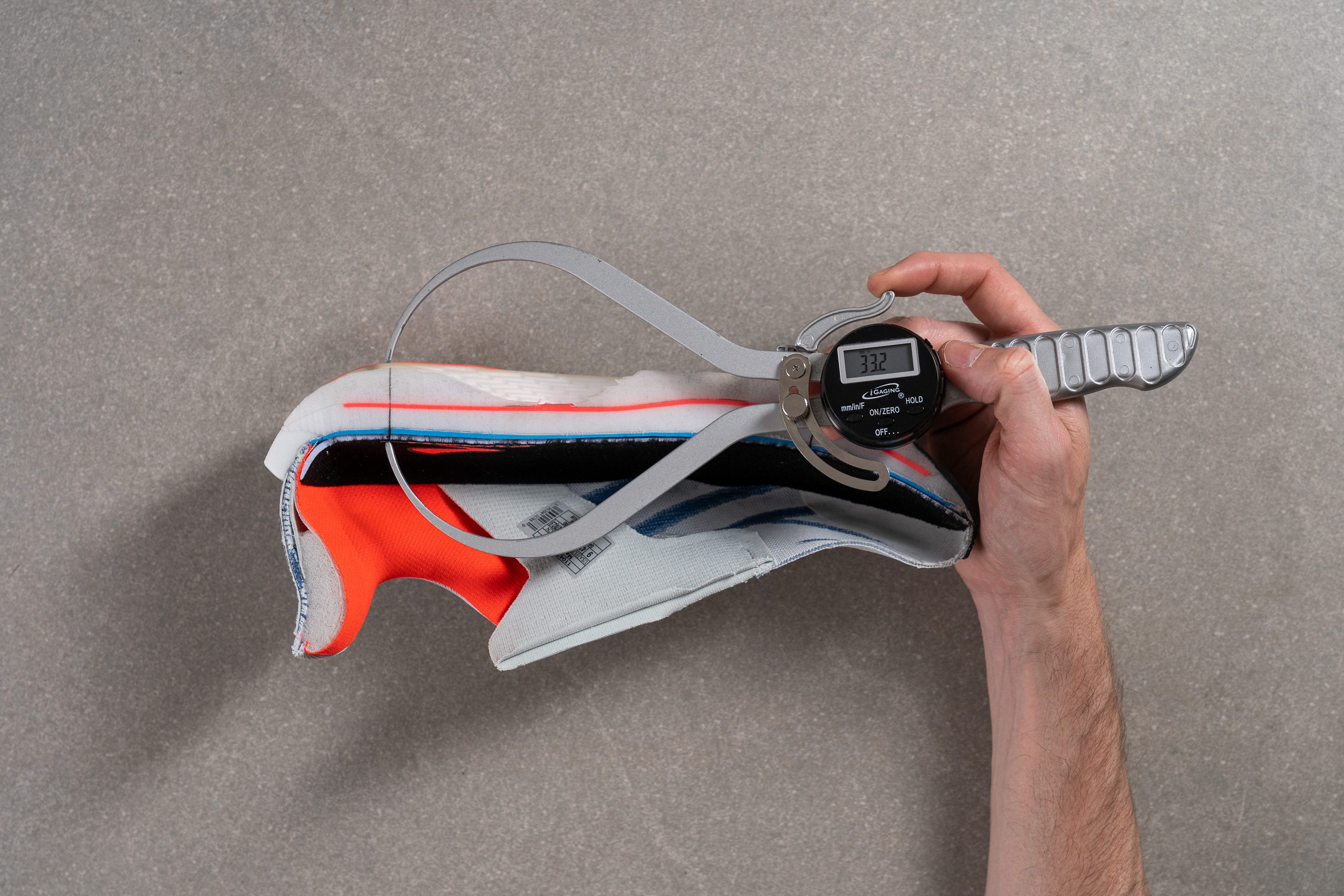
| Hyperion Max 2 | 33.2 mm |
| Average | 34.8 mm |
Forefoot stack
The forefoot has gained 2.2 mm from last year's version, totaling 26.4 mm, which benefits midfoot and especially forefoot strikers. However, as we previously noted, this increase largely results from the inclusion of the plate rather than the DNA Flash v2 foam itself.
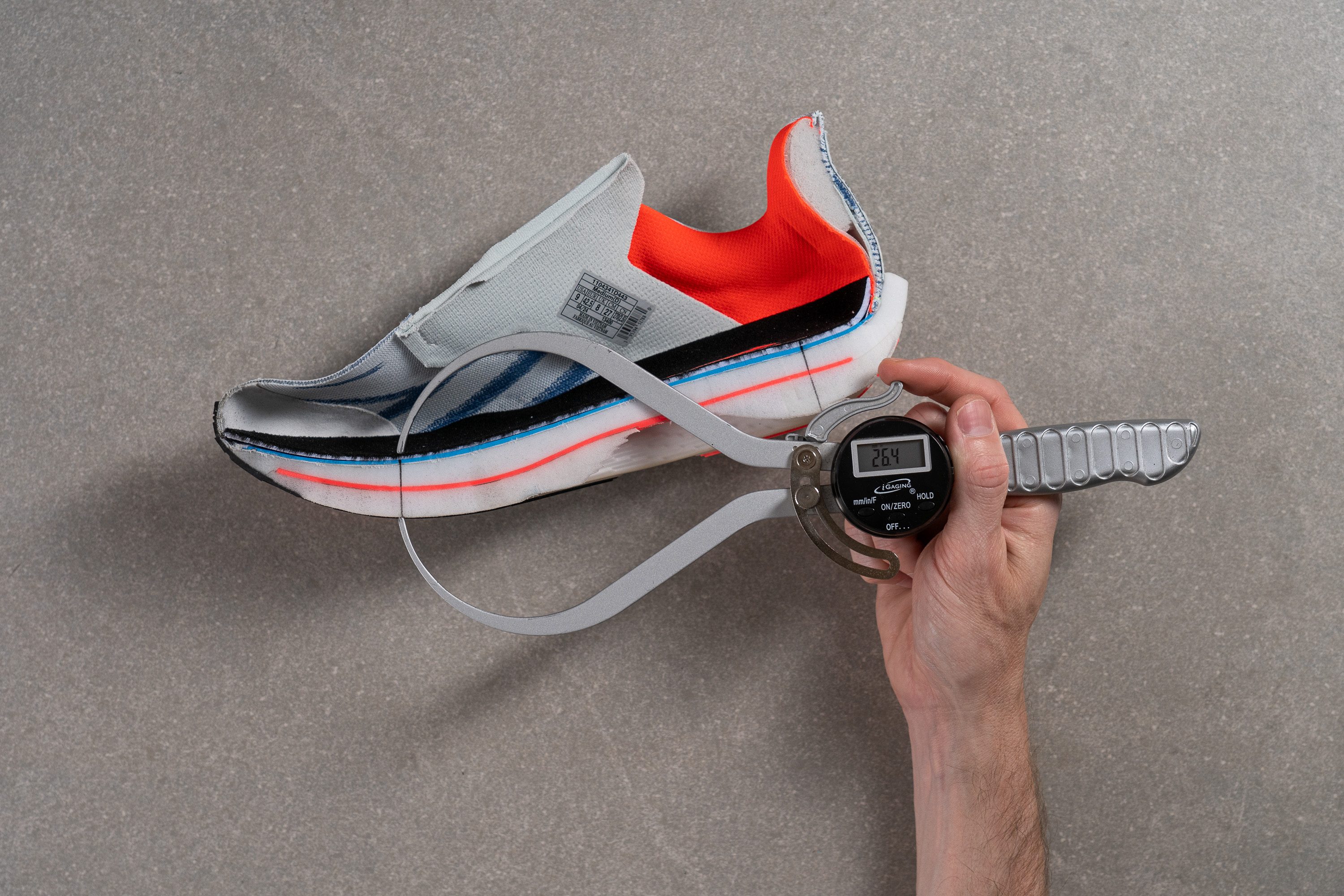
| Hyperion Max 2 | 26.4 mm |
| Average | 26.2 mm |
Drop
The difference between the forefoot and heel results in a 6.8-mm drop, which attracts a wide range of runners, particularly benefiting those who are midfoot and forefoot strikers.
For those accustomed to the regular Hyperion with its steep 12.3-mm drop, this offset might seem unusual. And some of you maybe were wondering if the Max variant maintains the same design path—well, the answer is clearly no.

| Hyperion Max 2 | 6.8 mm |
| Average | 8.6 mm |
Midsole softness
Now, let's explore the midsole of the Hyperion Max 2, always a highlight of our lab reviews. This version introduces the same DNA Flash v2 foam that debuted in the Hyperion Elite 4 and a novel configuration featuring two distinct foam layers encasing a nylon plate.
The primary DNA Flash v2 layer is positioned directly above the plate, just beneath our feet. We measured its softness at 20.9 HA, nearly identical to the first generation—it's certainly not pillowy, but not overly firm either.

This nitrogen-injected EVA foam surpasses traditional EVA in energy return and weight reduction, thanks to its internal bubbles. However, despite these advancements, it doesn't match the performance of elite superfoams like ZoomX or FF Turbo+, remaining a step behind the market leaders.
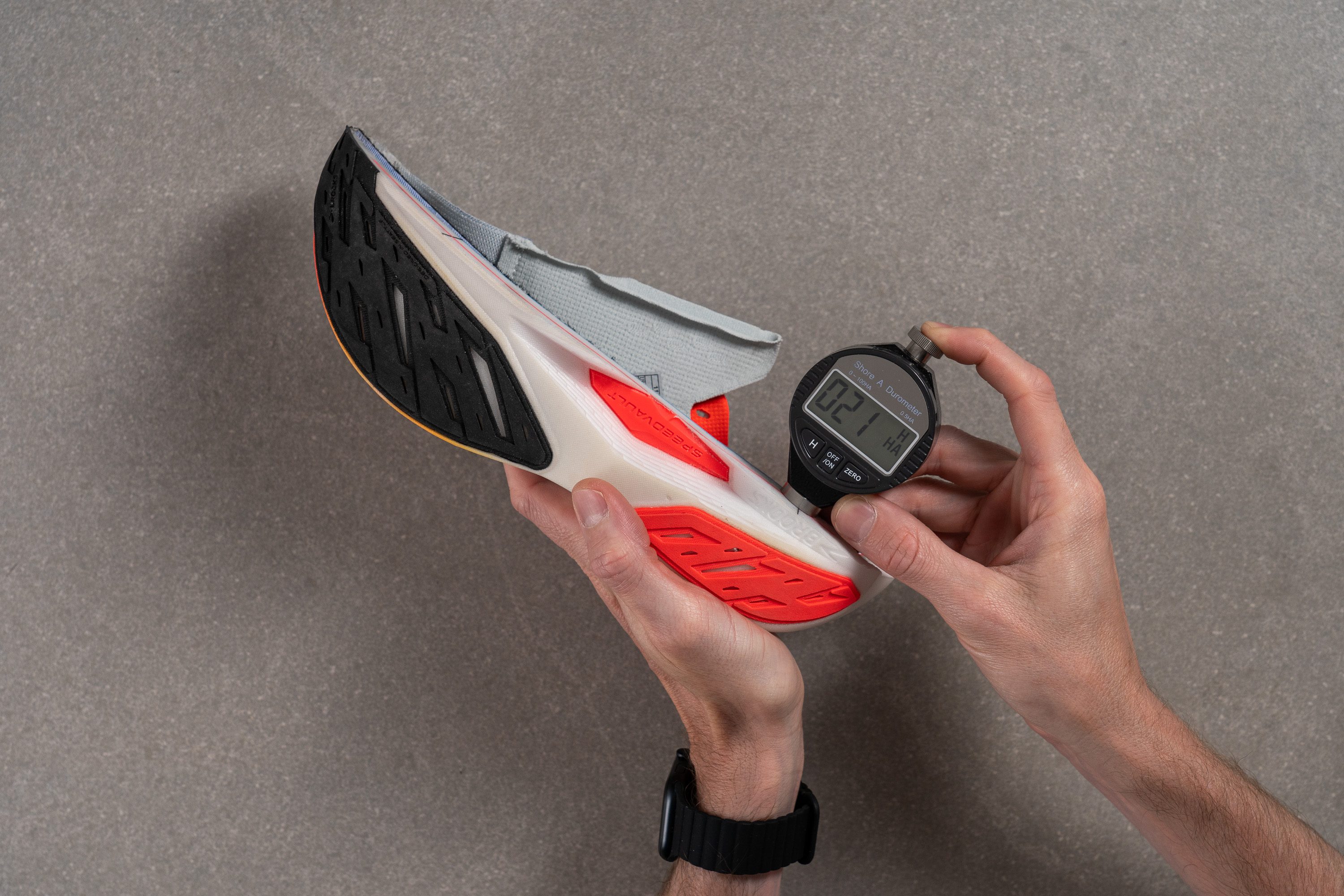
| Hyperion Max 2 | 20.9 HA |
| Average | 20.4 HA |
Secondary foam softness
While the first-generation Hyperion Max had a single foam layer, the new model boasts two. The additional layer sits beneath the plate and compresses against the ground, offering a softer and more plush feel compared to its predecessor.
To verify our impressions, we pressed our durometer against this secondary layer and recorded a softer measurement of 17.6 HA.

| Hyperion Max 2 | 17.6 HA |
| Average | 22.7 HA |
Rocker
Given its high stack of foam and moderate heel-to-toe drop, it was nearly essential for Brooks to incorporate a pronounced toe spring in the forefoot to smooth transitions—and fortunately, they did.

The heel also features a subtle late-stage rocker (nothing crazy like the Hoka Cielo X1), which indicates that this shoe is better suited for midfoot or forefoot strikers.
Plate
The most significant update in the Hyperion Max 2 from its predecessor is the addition of a full-length nylon plate in the midsole. We found that this change significantly impacts running performance.
Although it's not made of carbon fibre, the Speedvault plate adds some stiffness and support, enhancing the compression of the lower foam layer. However, don't expect the aggressive ride found in shoes like the Nike Vaporfly 3, as the plate here is flatter, designed more for stability than speed.
Size and fit
Size
Brooks Hyperion Max 2 fits true to size (167 votes).
Width / Fit
One of the challenges for some runners (and an advantage for others) was the snug, race-focused fit of the original Hyperion Max.
Based on our findings, this design remains quite unchanged. We tested and measured 94.8 mm at the widest part of the gel mould we created. This is just around the average width of running shoes we've tested so far. We have even better news about the toebox.
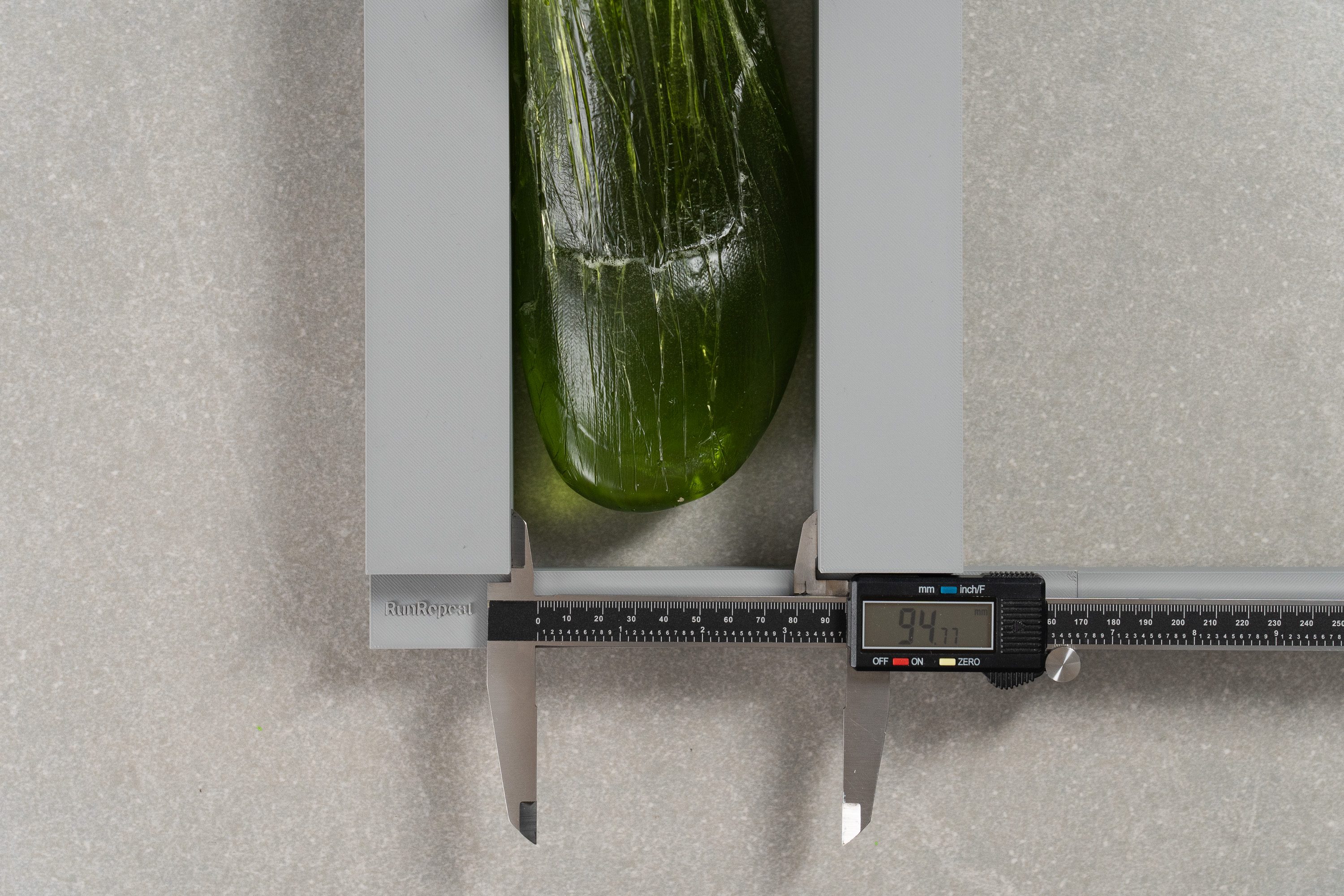
| Hyperion Max 2 | 94.8 mm |
| Average | 95.1 mm |
Toebox width
We discovered a standard taper in the toebox at 73.7 mm, which, in our view, was a welcome relief.
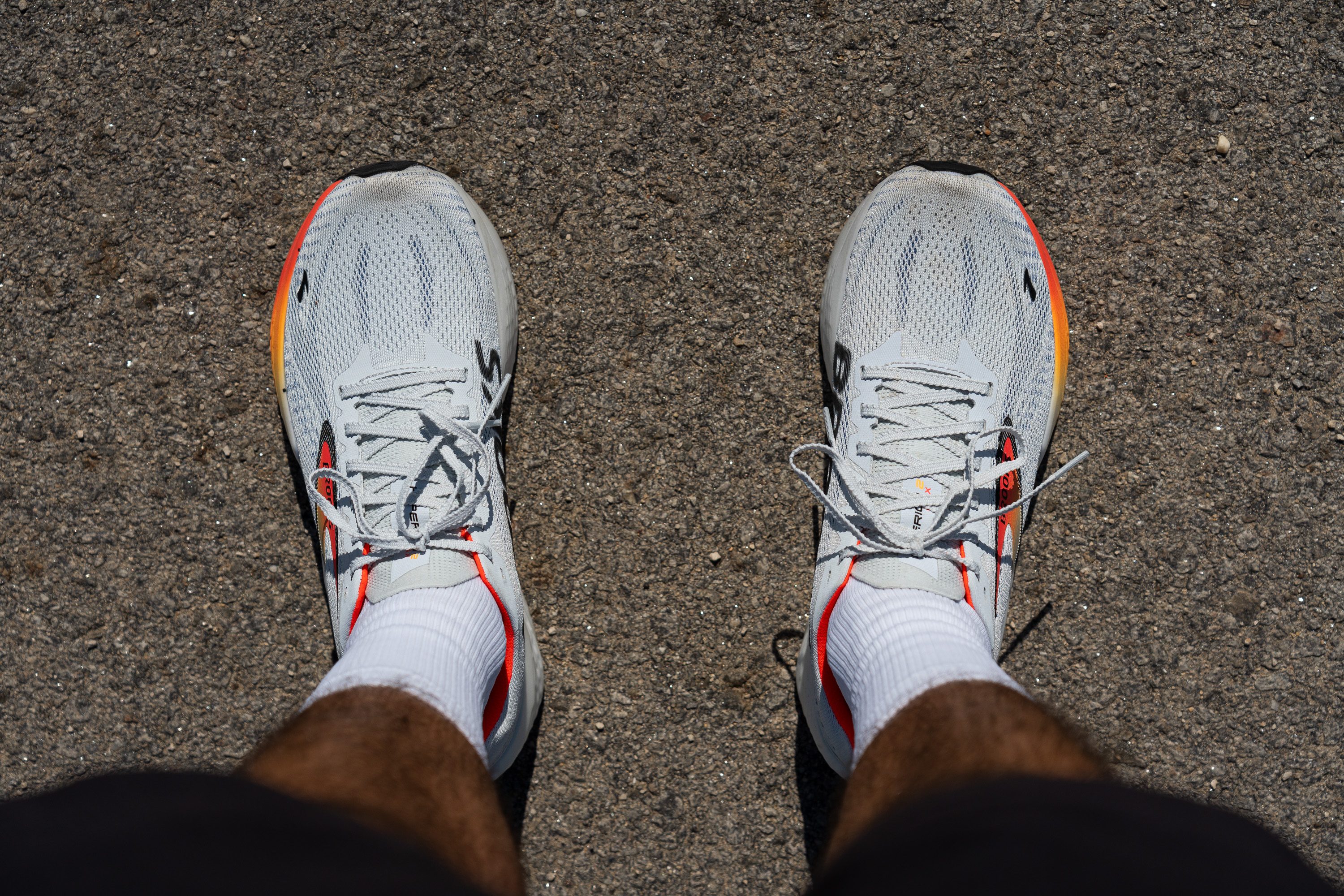
The toe area gets decently rounded, making it comfortable enough for most runners even during sessions over 1 hour.

| Hyperion Max 2 | 73.7 mm |
| Average | 73.2 mm |
Toebox height
This is not a high-volume toebox. After testing, we discovered a 26.6 mm height in our third measurement on the gel mould—offering standard room but leaning towards a snug fit that suits well a tempo trainer.
Those with larger feet or who dislike any toe pressure might find the Hyperion Max 2 less accommodating.

| Hyperion Max 2 | 26.6 mm |
| Average | 27.1 mm |
Traction / Grip
Traction test
We never hesitated to pick up the pace on dry and wet sidewalks thanks to the Hyperion Max 2's solid grip.
Applying 500N of force to the shoe's forefoot, we measured it coefficient of friction on a 7-degree wedge and a wet slab of concrete. With friction score of 0.46, our grip test confirmed that the shoe indeed has a good bite in the forefoot, be it on dry on wet surface.
| Hyperion Max 2 | 0.46 |
| Average | 0.48 |
Outsole design
The outsole offers impressive rubber coverage for a performance trainer, giving peace of mind to runners wary of exposed foam. It delivers solid grip, and the high-wear zones are far better protected than what we typically see in other supertrainers.
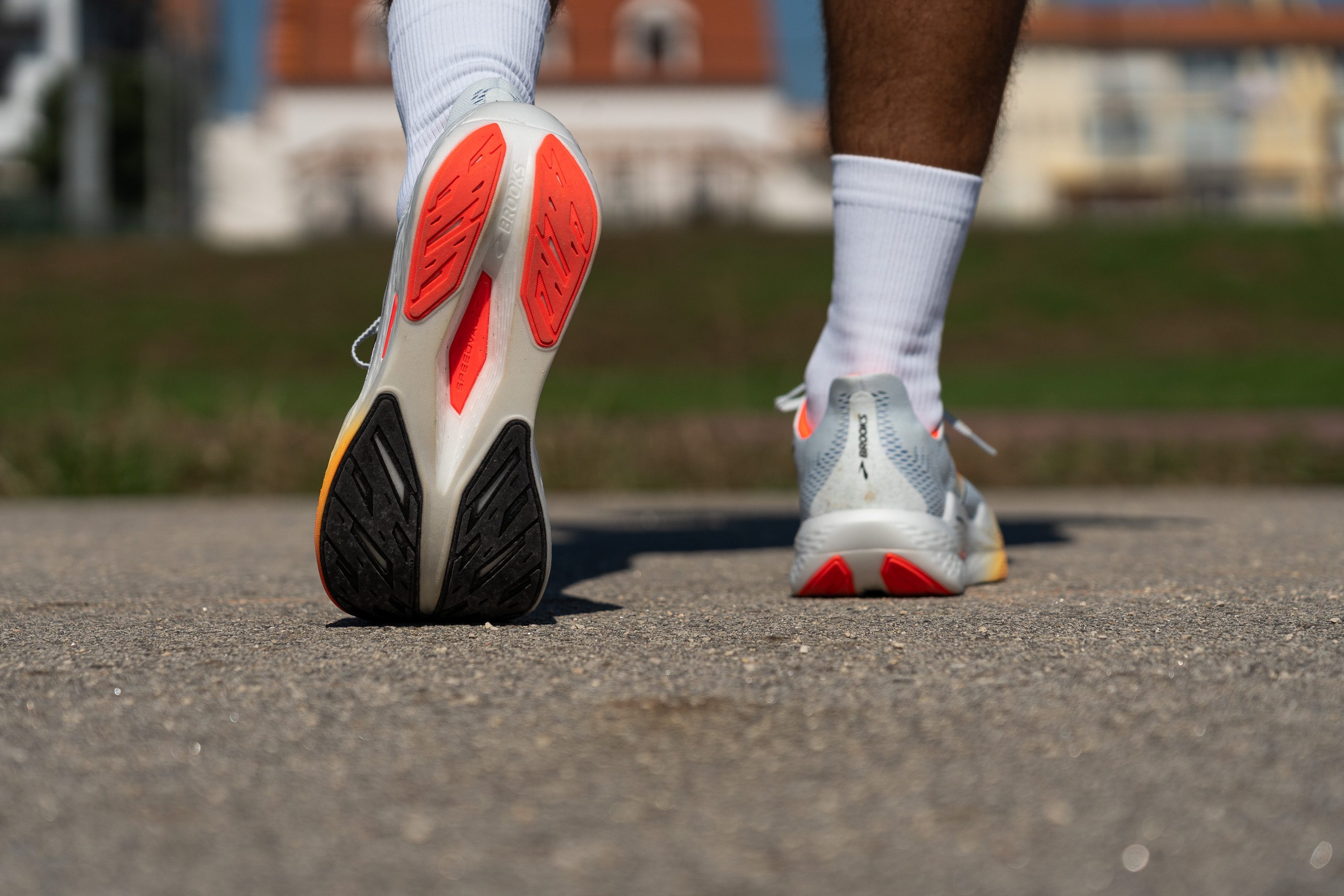
Flexibility / Stiffness
In our previous discussions about the plate in this lab review, we mentioned that the shoe felt stiffer during our runs, but we hadn't yet quantified this observation. After conducting a 30-degree bend test, we discovered that the Hyperion Max 2 required 22.4N of force to bend. That's clearly above the average running shoe!
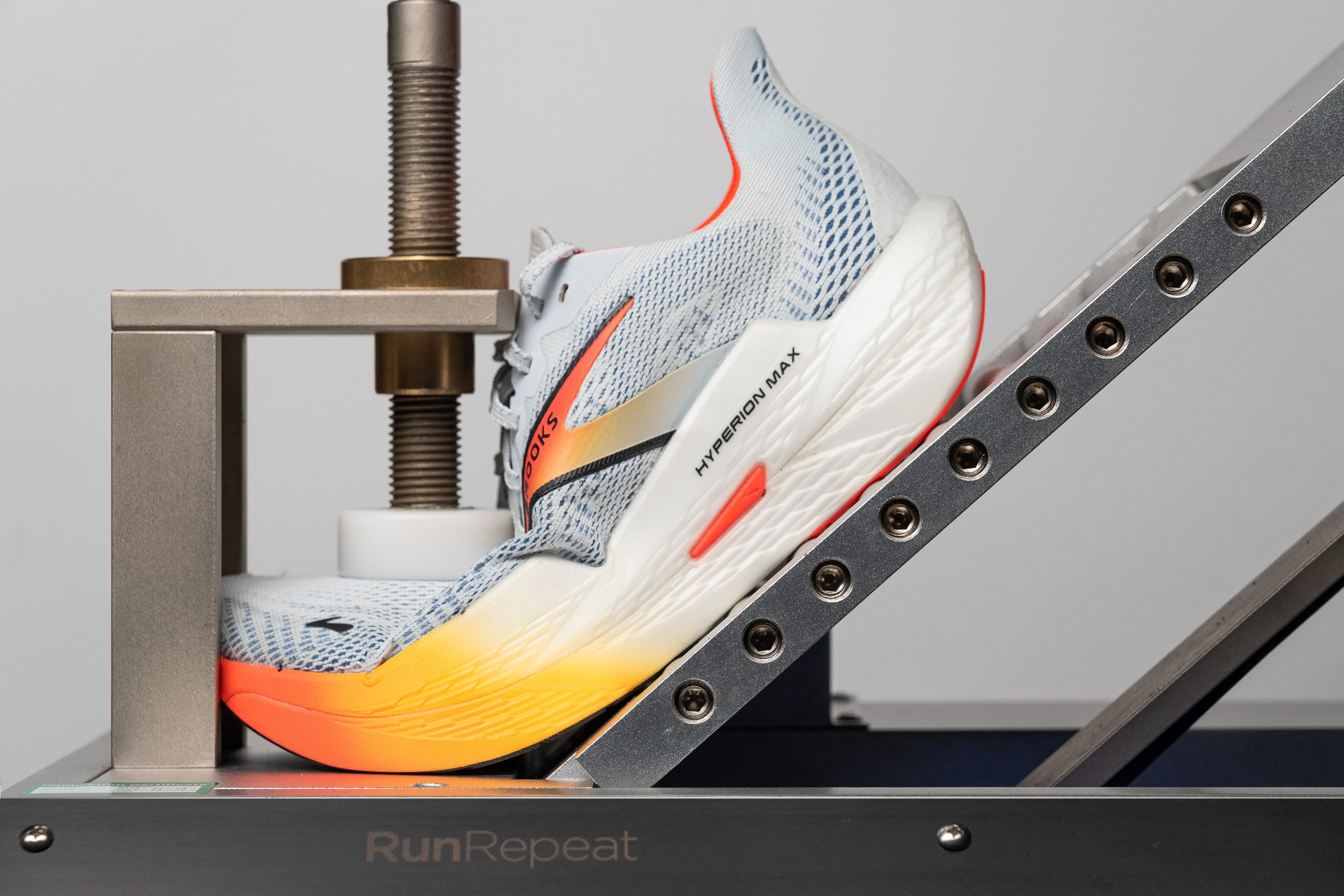
| Hyperion Max 2 | 22.4N |
| Average | 15.3N |
Stiffness in cold (%)
Fortunately, we discovered that after an additional 20 minutes in the freezer, the Hyperion Max 2 only increased in stiffness by 17%, which is a favourable result.
| Hyperion Max 2 | 17% |
| Average | 33% |
Weight
Brooks has traditionally aimed for lightweight designs in the Hyperion lineup, and the first-generation Hyperion Max was impressively light at just 7.5 oz or 213g. That's why we were quite surprised by the heft of the v2 when we first held it in the lab.
At 9.2 oz or 262g, it's not that bad, of course. However, compared to many tempo shoes and especially its predecessor, it's clear that Brooks has room for improvement. Despite the added comfort, cushioning, and inclusion of a plate in the new version, we think that the weight gain it's excessive.

| Hyperion Max 2 | 9.2 oz (262g) |
| Average | 9.3 oz (264g) |
Breathability
To kickstart the lab review of the Hyperion Max 2, we turned on our smoke-pumping machine to evaluate the airflow through the engineered mesh upper, which initially appeared well-ventilated based on its materials and design.
However, breathability fell slightly short of our expectations. While not a poor result, we noticed that airflow became somewhat restricted after a few seconds, resulting in a decent 3/5 rating from us.
After completing the smoke test, we continued with our series of evaluations to further analyse the upper. First, we shone a light through the upper to compare variations in thickness and ventilation. Brooks excelled by enhancing the toebox area while simultaneously structuring the sides of the upper for increased stability.

Regarding the toebox, we used our microscope to investigate the cause of the reduced airflow, noting that its predecessor scored a higher 5/5.
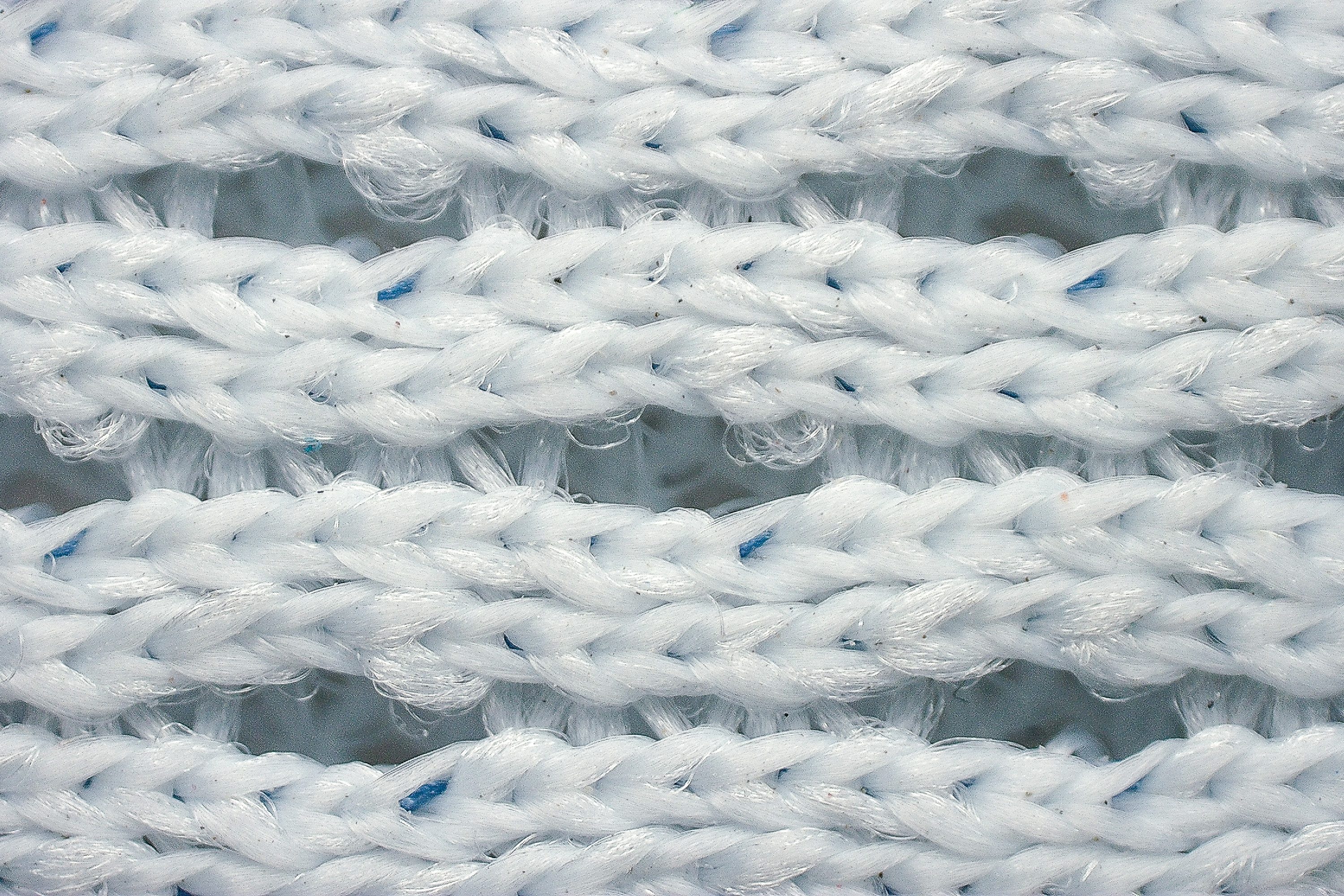
Previously, the ventilation holes were unobstructed, but now, Brooks has added a secondary layer beneath the top one, which impedes airflow.
Overall, this upper is quite good, though a bit more ventilation would have been ideal. Nonetheless, it performs adequately in nearly all temperatures, except in extremely hot conditions.
| Hyperion Max 2 | 3 |
| Average | 3.7 |
Stability
Lateral stability test
For those seeking a stable training partner for fast paces, the Hyperion Max 2 delivers. It features a lower drop and large midsole sidewalls divided into two sections, along with the Speedvault plate and a central groove in the outsole.

We discovered that this combination provides a stable ride for neutral runners and also serves as a solid choice for mild pronators with a forefoot or midfoot striking technique.
Torsional rigidity
From the moment we unboxed and tested the shoe, we noticed it was significantly more rigid than its predecessor, with its rigidity score jumping from 2/5 to 4/5. This increase in stiffness is understandable, as the first version lacked any kind of plate, whereas this second edition incorporates a Speedvault nylon plate.
| Hyperion Max 2 | 4 |
| Average | 3.5 |
Heel counter stiffness
The heel counter (3/5) features a small cardboard piece, providing a balance of rigidity that is noticeable without being excessive, being very similar to daily trainers. In our tests, we discovered that it offers both comfort and a secure fit for long runs.
| Hyperion Max 2 | 3 |
| Average | 2.9 |
Midsole width - forefoot
While the inclusion of the plate in the Hyperion Max 2 has reduced its natural flexibility, fans of the original's agility and nimbleness will be pleased to know that Brooks at least has maintained controlled dimensions.
Despite the trend of increasingly wider running shoes, the Hyperion Max 2 remains modest in width, offering an alternative from most performance trainers. We measured the forefoot at 114.0 mm, which aligns closely with the average.

| Hyperion Max 2 | 114.0 mm |
| Average | 114.4 mm |
Midsole width - heel
In our lateral stability test, we noted that this shoe excels for forefoot and midfoot strikers but falls short for rearfoot strikers, and one big reason for that is its narrow 86.4-mm heel width.
However, those needing even slight stability might benefit from trying a similar shoe with a wider heel, such as the Hoka Mach X.
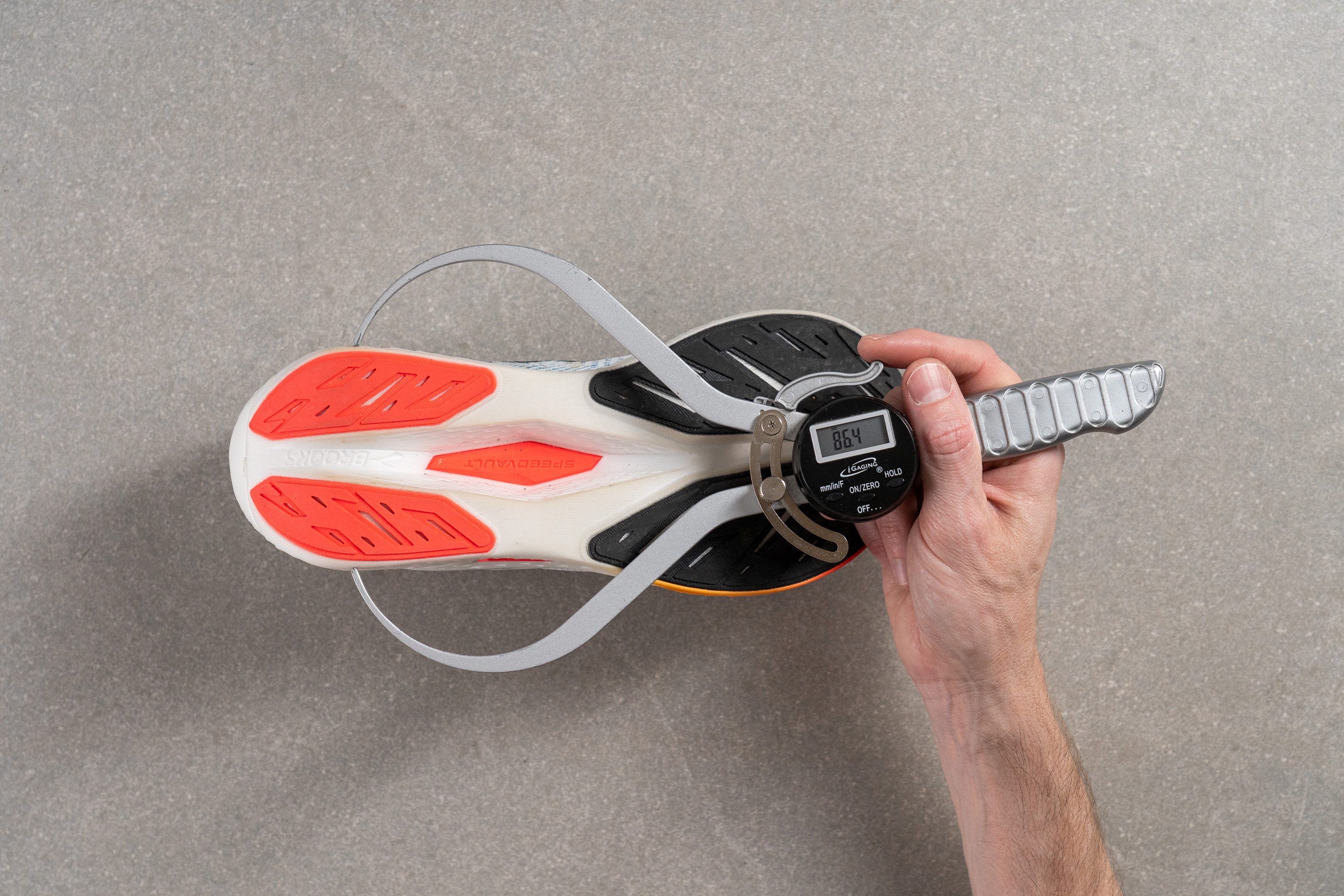
| Hyperion Max 2 | 86.4 mm |
| Average | 90.7 mm |
Durability
Toebox durability
Every downgrade often has its side benefits, and that proved true in our toebox durability test.
We employed our standard method using a Dremel at 5K RPM and 3.2N of force. And we discovered a noticeable improvement over the first-generation Hyperion Max, as the dual-layered upper increased durability to a solid 3/5 rating.

| Hyperion Max 2 | 3 |
| Average | 2.6 |
Heel padding durability
We continued using our setup with the Dremel to test the heel padding, which is notably plush and comfortable for a tempo-training shoe.
We were pleased to discover that this model has improved from the first version, scoring a decent 3/5. While there's room for improvement, we are satisfied with this performance for now.

| Hyperion Max 2 | 3 |
| Average | 3.4 |
Outsole hardness
After noting slow but steady progress in our previous two durability tests, we shifted focus to the outsole, which boasts extensive rubber coverage for being a performance trainer.

We discovered, however, that the rubber Brooks uses is relatively soft, rated at 72.0 HC, potentially impacting its durability. But, of course, here at RunRepeat, we have a specific test for that!
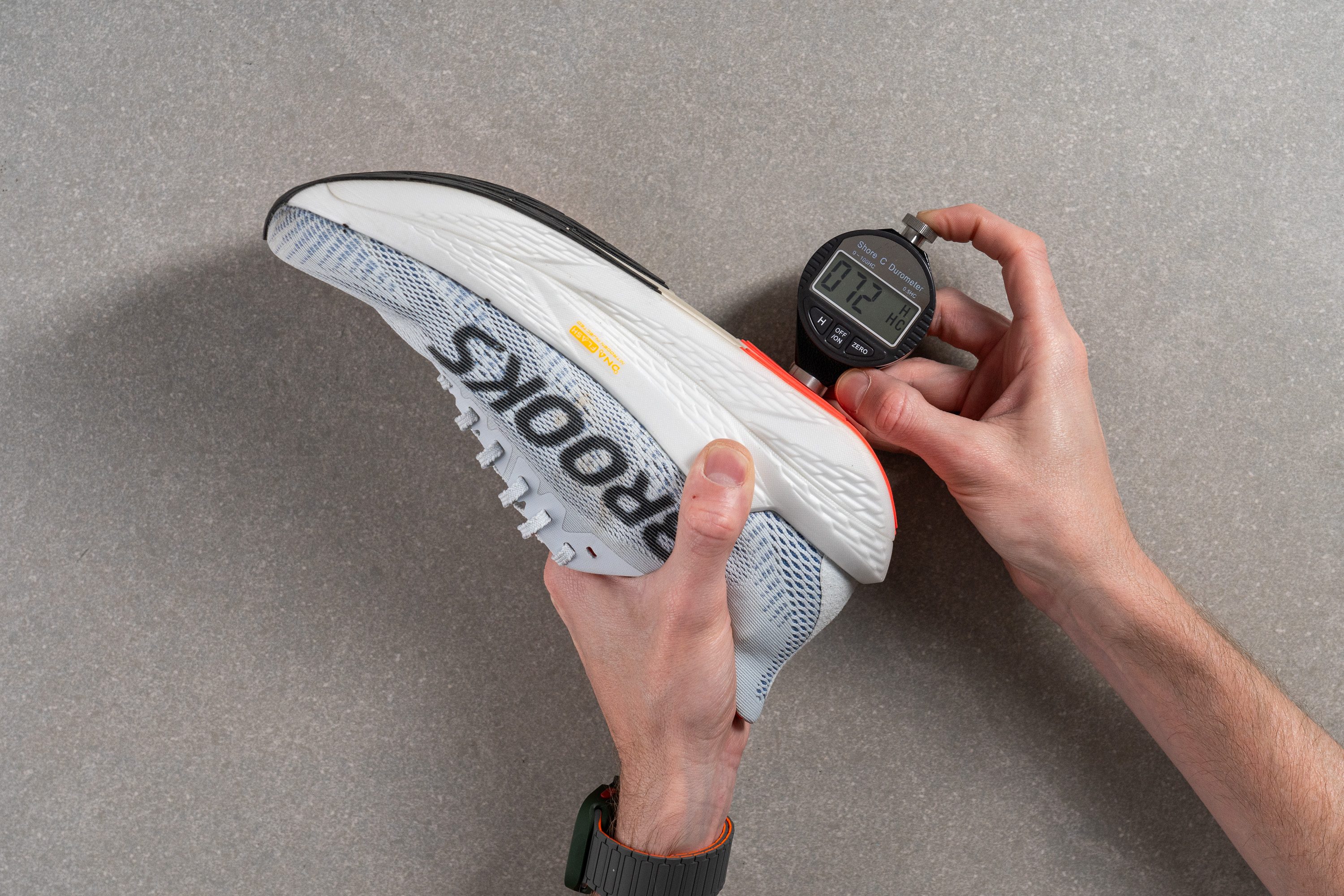
| Hyperion Max 2 | 72.0 HC |
| Average | 79.2 HC |
Outsole durability
Concerned about the potential for early wear due to the softer rubber, we performed one additional test with the Dremel.
We were happy with the results—after completing the test, we found only a minor indentation of 0.8 mm. That's way better than what we expected with such a soft rubber.
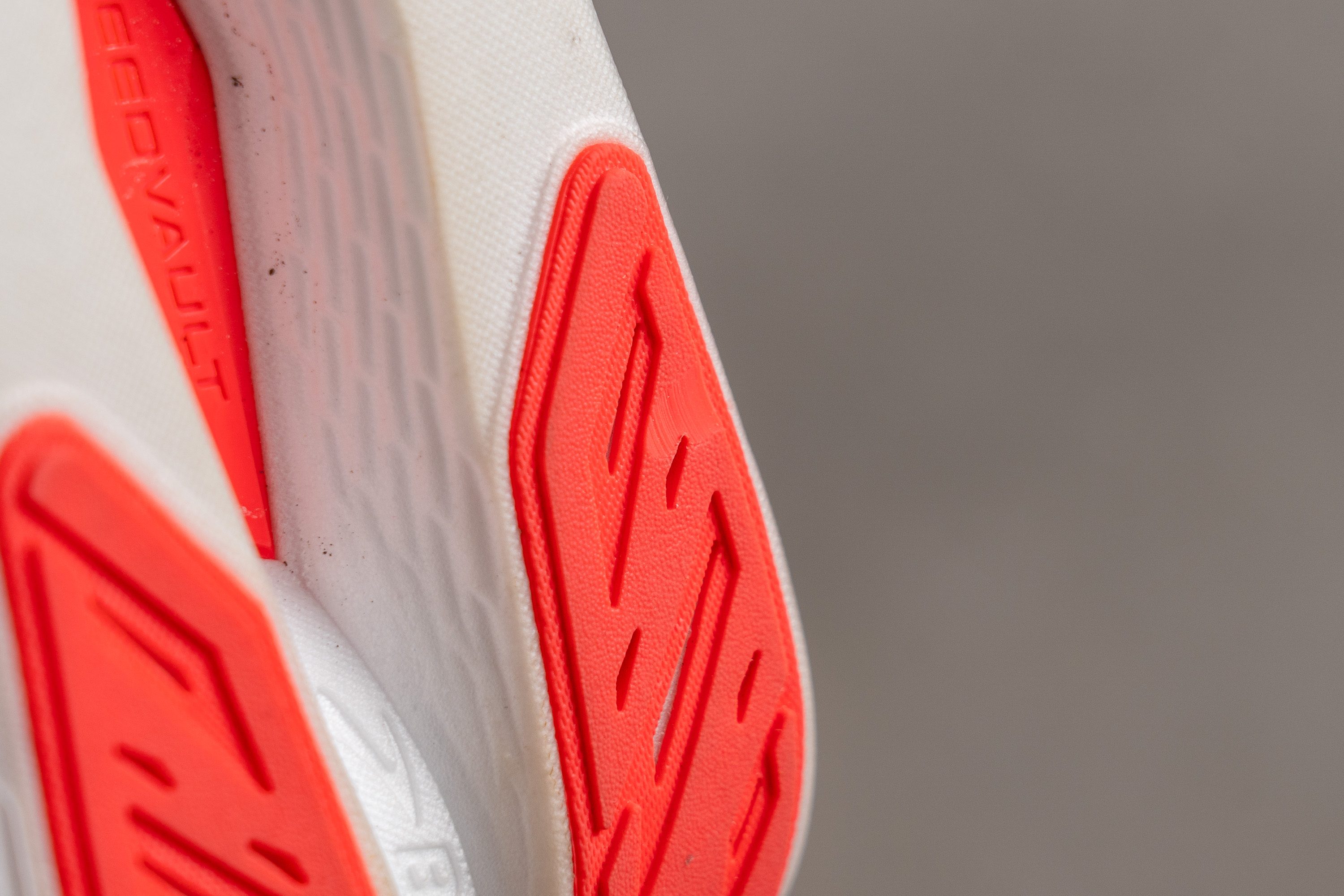
| Hyperion Max 2 | 0.8 mm |
| Average | 1.1 mm |
Outsole thickness
To ensure greater durability, we discovered that Brooks did not skimp on the outsole thickness, adding 3.0 mm to prolong the life of the Hyperion Max 2.
In fact, given that this is a shoe designed for fast running where weight is crucial, we think they could potentially trim down 0.5 or 1 mm in future versions.
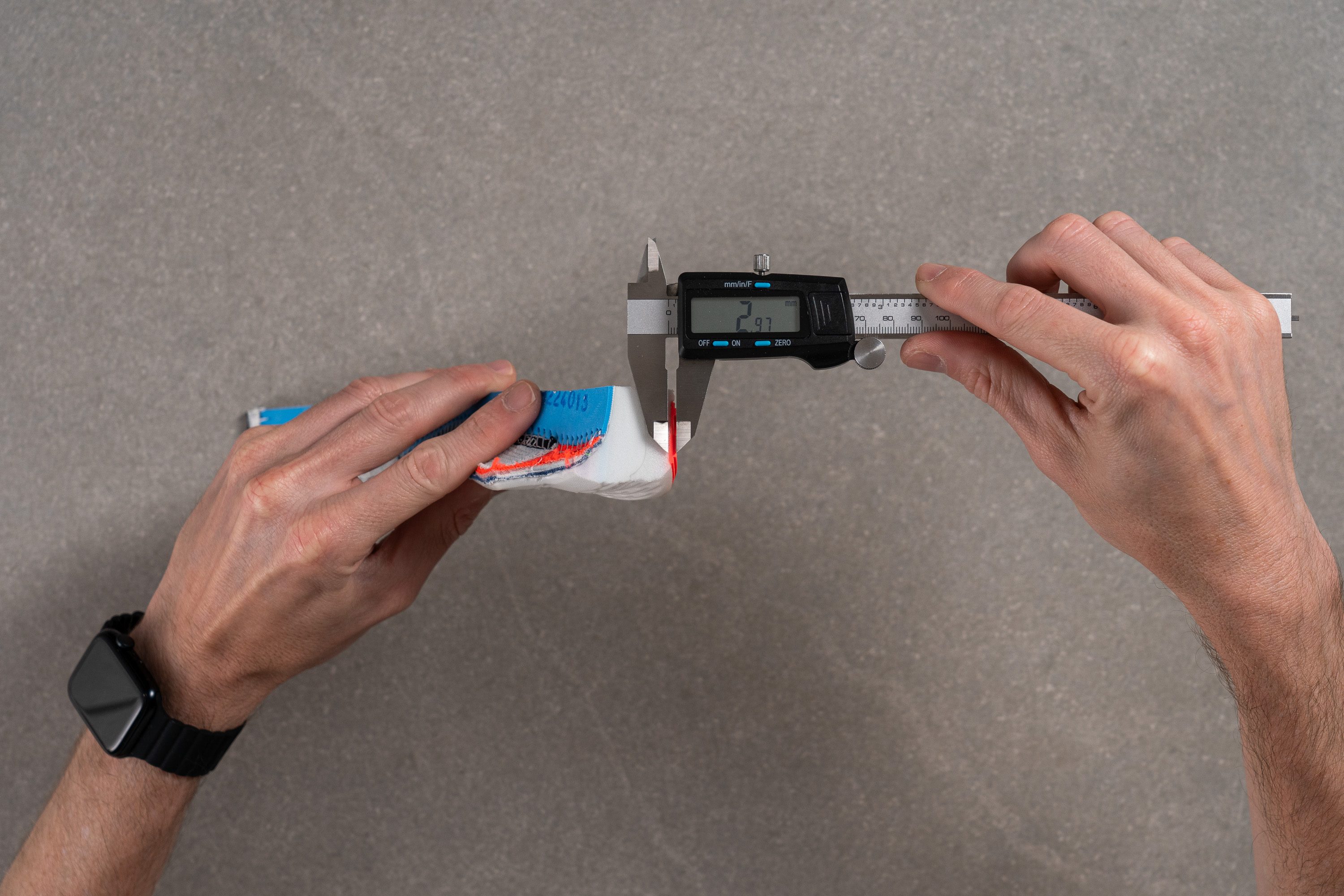
| Hyperion Max 2 | 3.0 mm |
| Average | 3.2 mm |
Misc
Insole thickness
According to measurements from our calipers, the Hyperion’s midsole thickness is only 2.8 mm, which is thinner than that of the typical shoe.
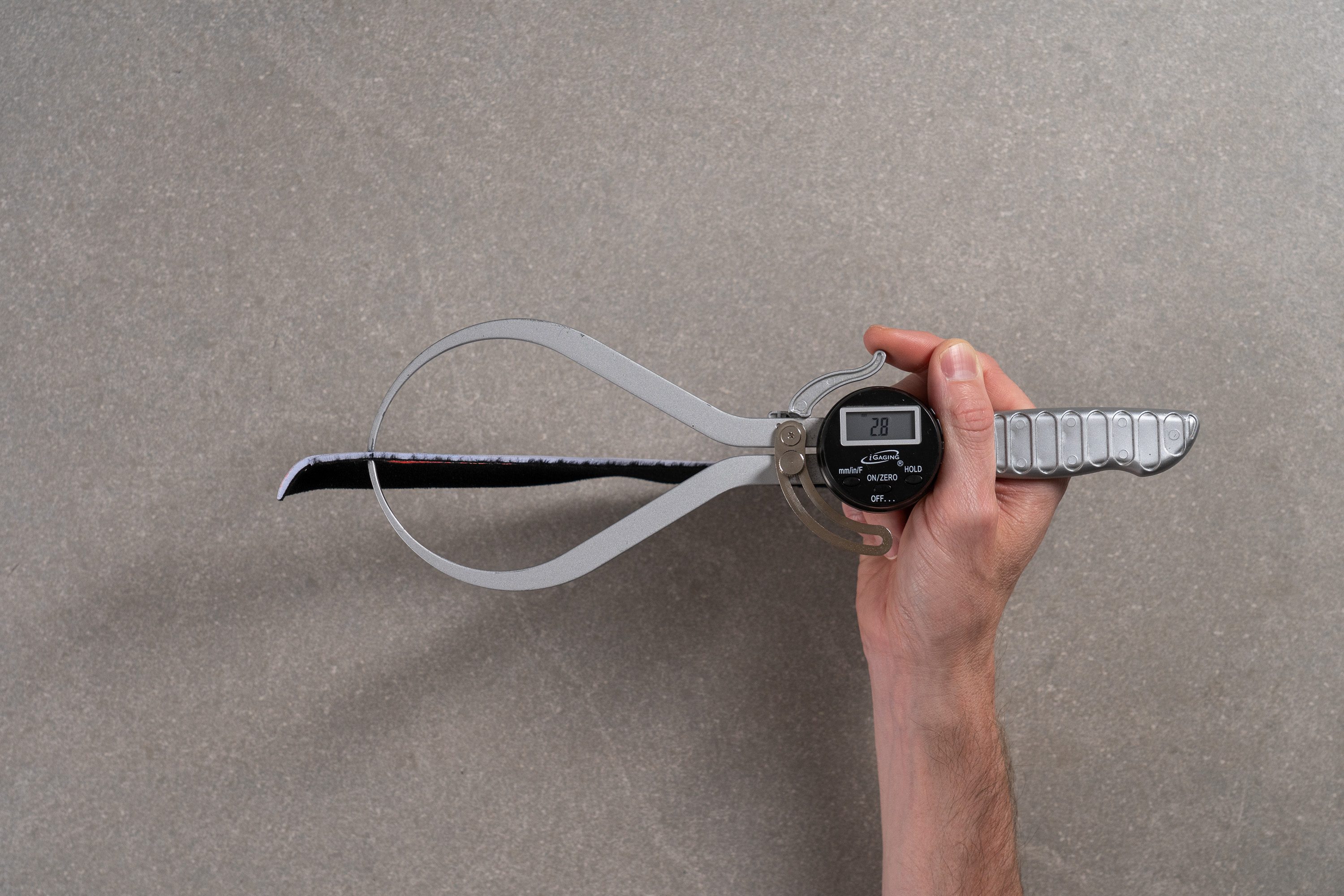
| Hyperion Max 2 | 2.8 mm |
| Average | 4.5 mm |
Removable insole
If you're looking to tweak your Hyperion Max 2 with personal orthotics or alternate insoles, the Hyperion Max 2 makes it easy. We discovered that the insole is not glued to the last, allowing for third party orthotics.
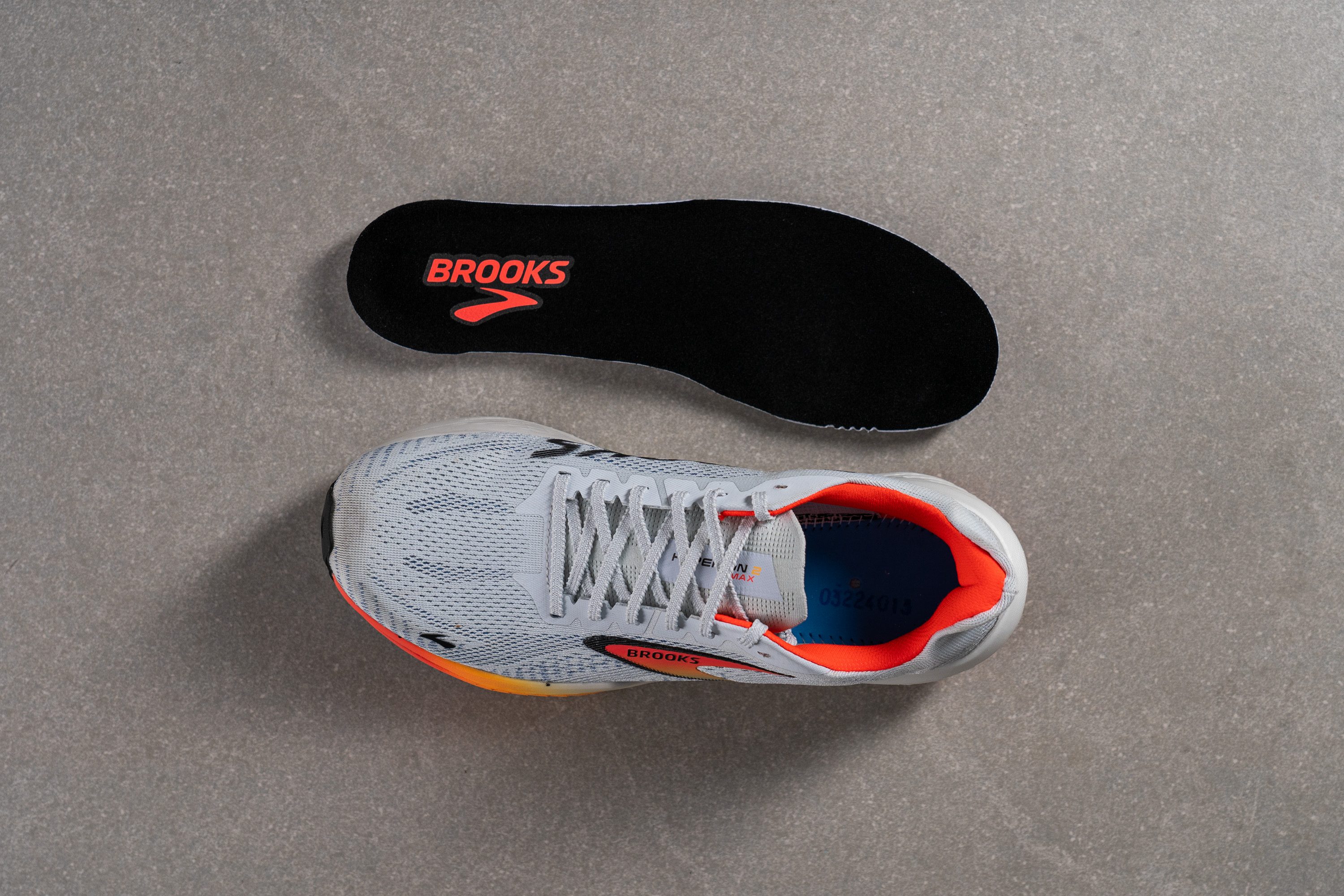
| Hyperion Max 2 | Yes |
Midsole softness in cold (%)
To evaluate the Hyperion's performance in cold conditions, we froze the shoe for 20 minutes and then measured its softness again. The post-freezing test revealed a minor 18.5% change in performance, which is a good outcome for an EVA-based foam.
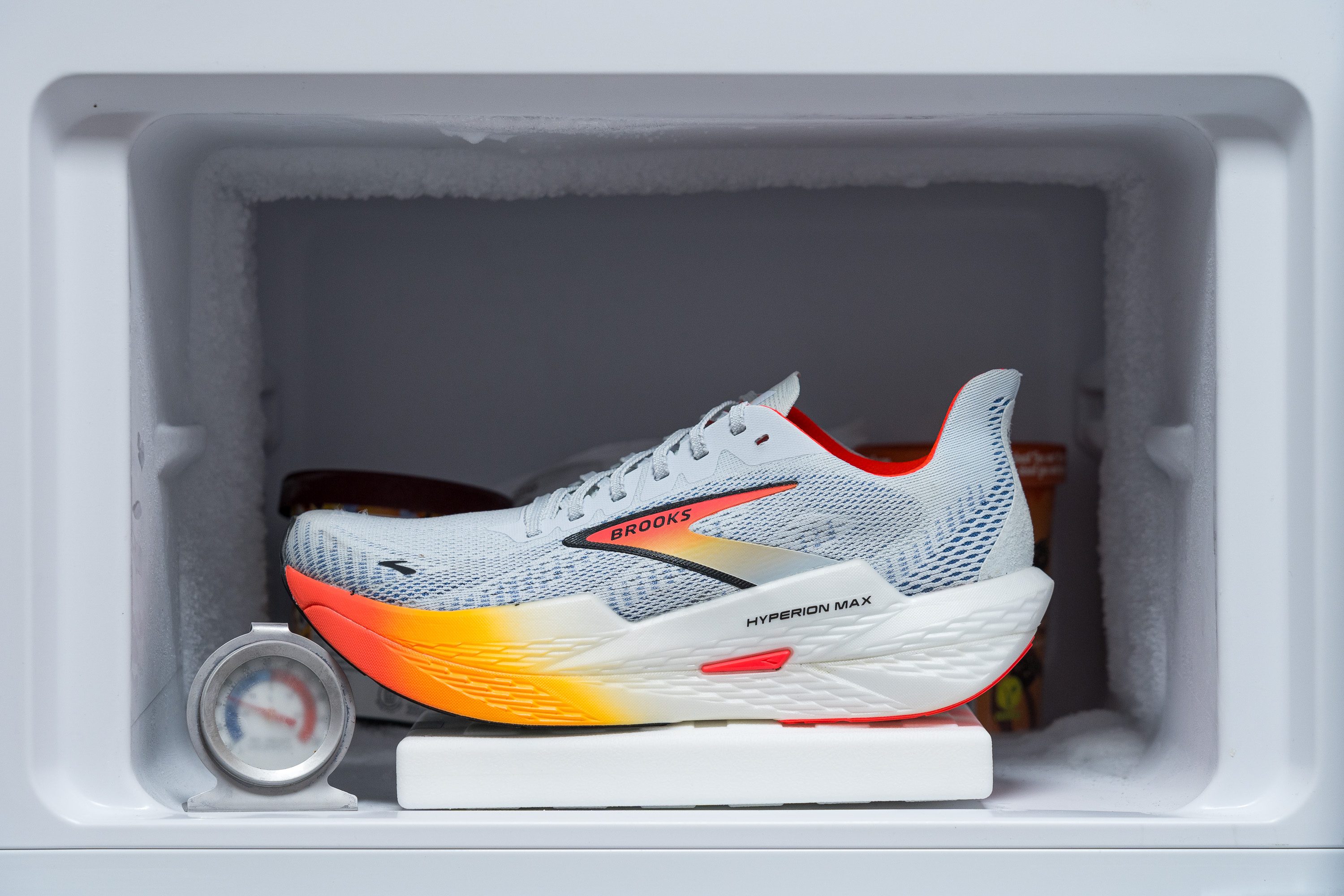
| Hyperion Max 2 | 19% |
| Average | 24% |
Reflective elements
It appears to us that Brooks has yet again missed the mark for night runners, as our tests revealed that the shoe lacks any reflective features.
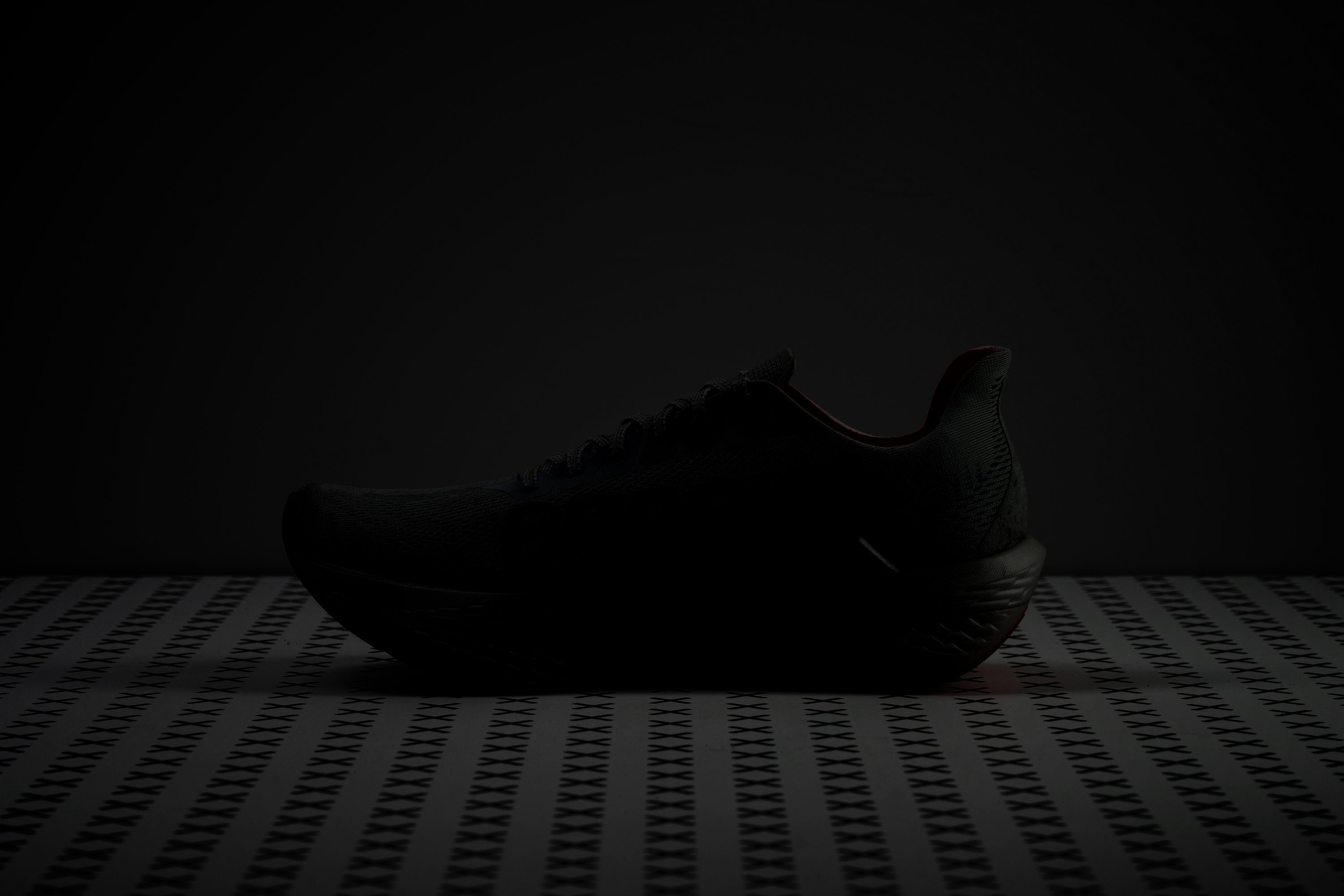
| Hyperion Max 2 | No |
Tongue padding
Brooks knew they had a problem with the weight of the Hyperion Max 2, and the tongue received significant slimming, now just 1.9 mm thick compared to the previous 5.4 mm. This transforms it from the tongue of an average daily trainer to that of a racer.
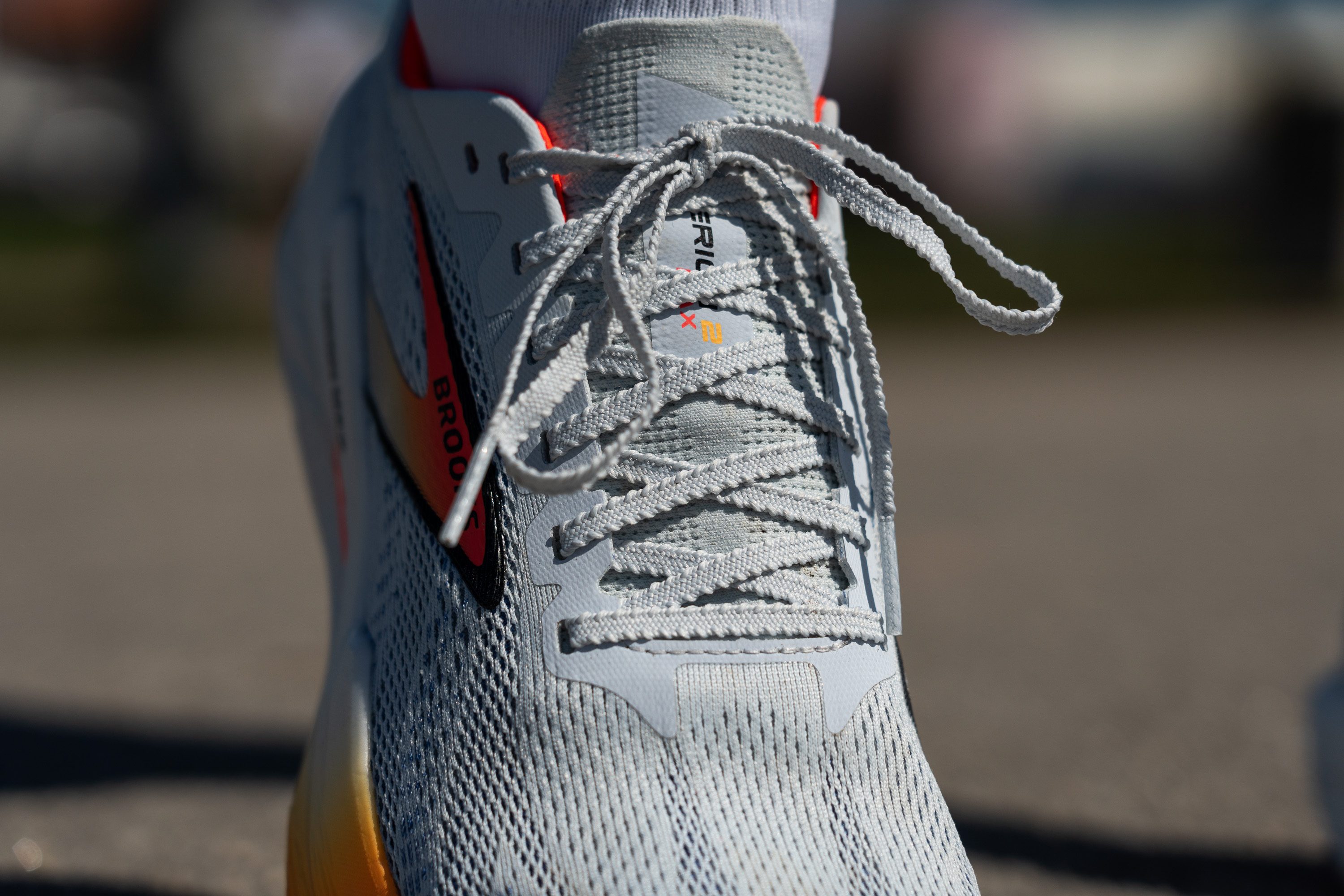
While not everyone might be thrilled with this change, we appreciate it in a performance trainer. We also discovered that Brooks chose not to include typical laces, opting instead for textured laces similar to those on the Nike Alphafly 3—a nice touch that helps justify the price increase.
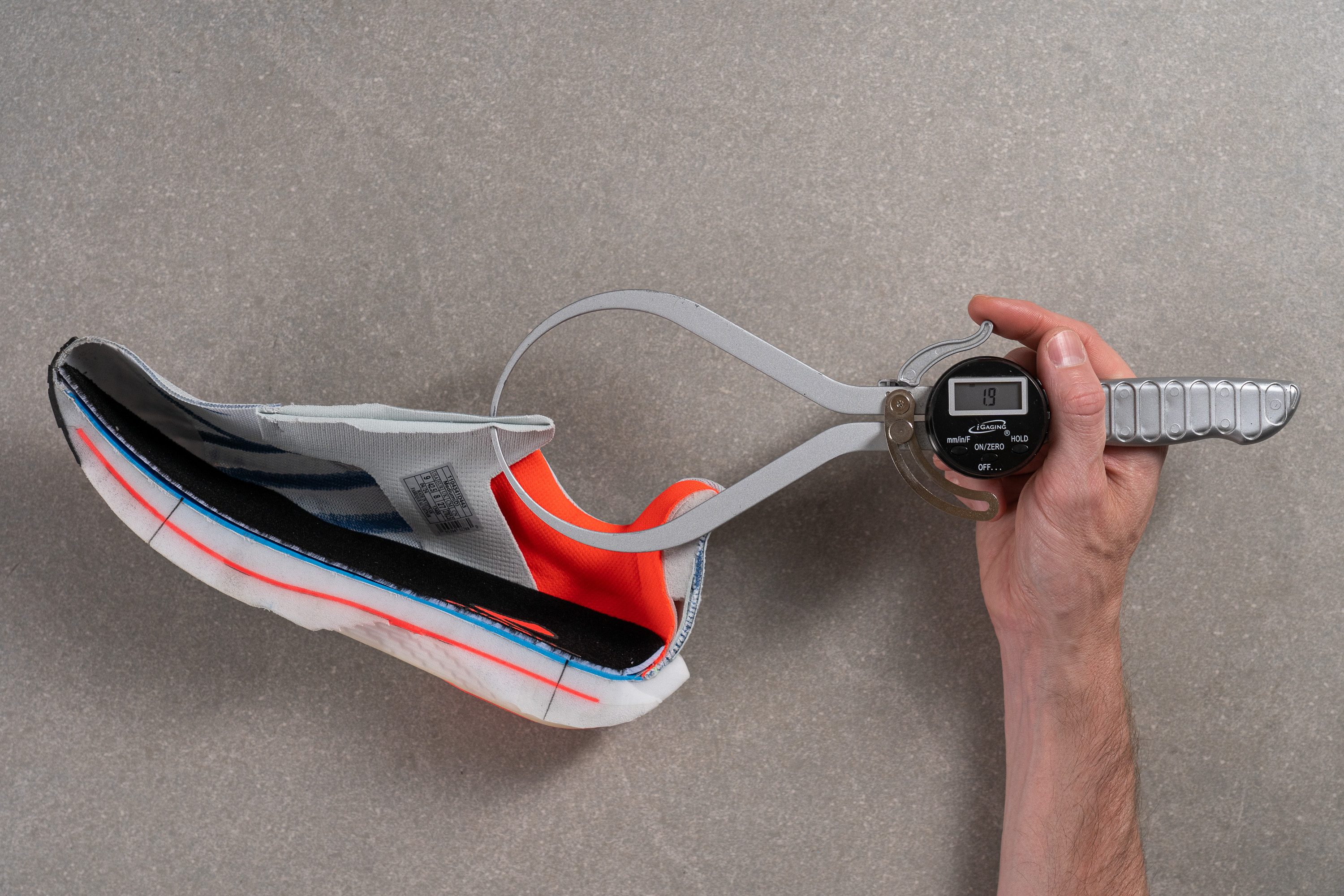
| Hyperion Max 2 | 1.9 mm |
| Average | 5.8 mm |
Tongue: gusset type
The Hyperion Max's lack of a gusseted tongue was a significant oversight for a premium-priced running shoe. Fortunately, Brooks has heard the running community and rectified this in the latest update, introducing a perfectly executed semi-gusseted tongue that enhances both fit and comfort.
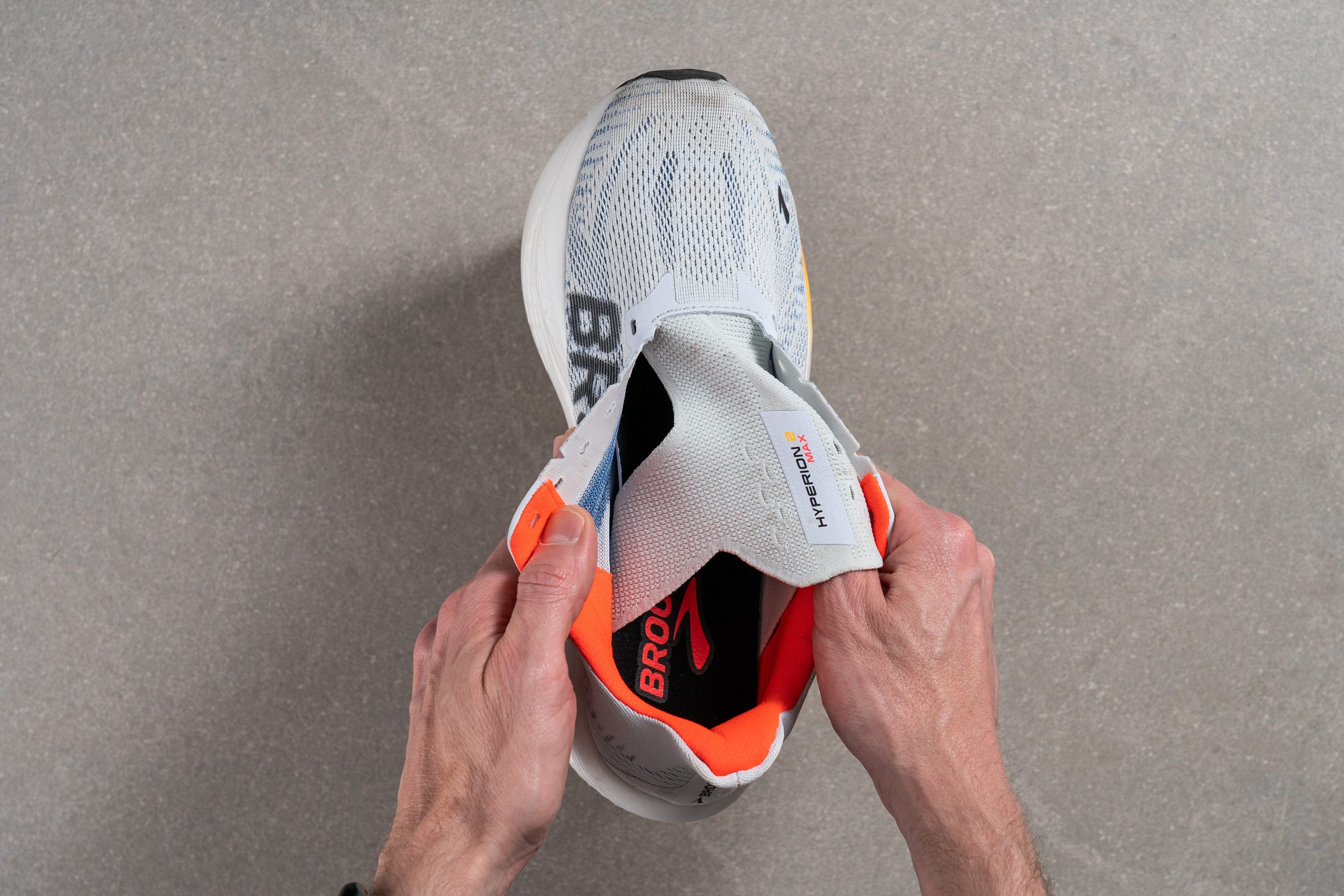
| Hyperion Max 2 | Both sides (semi) |
Heel tab
Brooks rarely uses finger-loop heel tabs, only incorporating them in some trail shoes like the Cascadia 17. In this model, however, they have extended the heel collar to facilitate grabbing it when necessary.
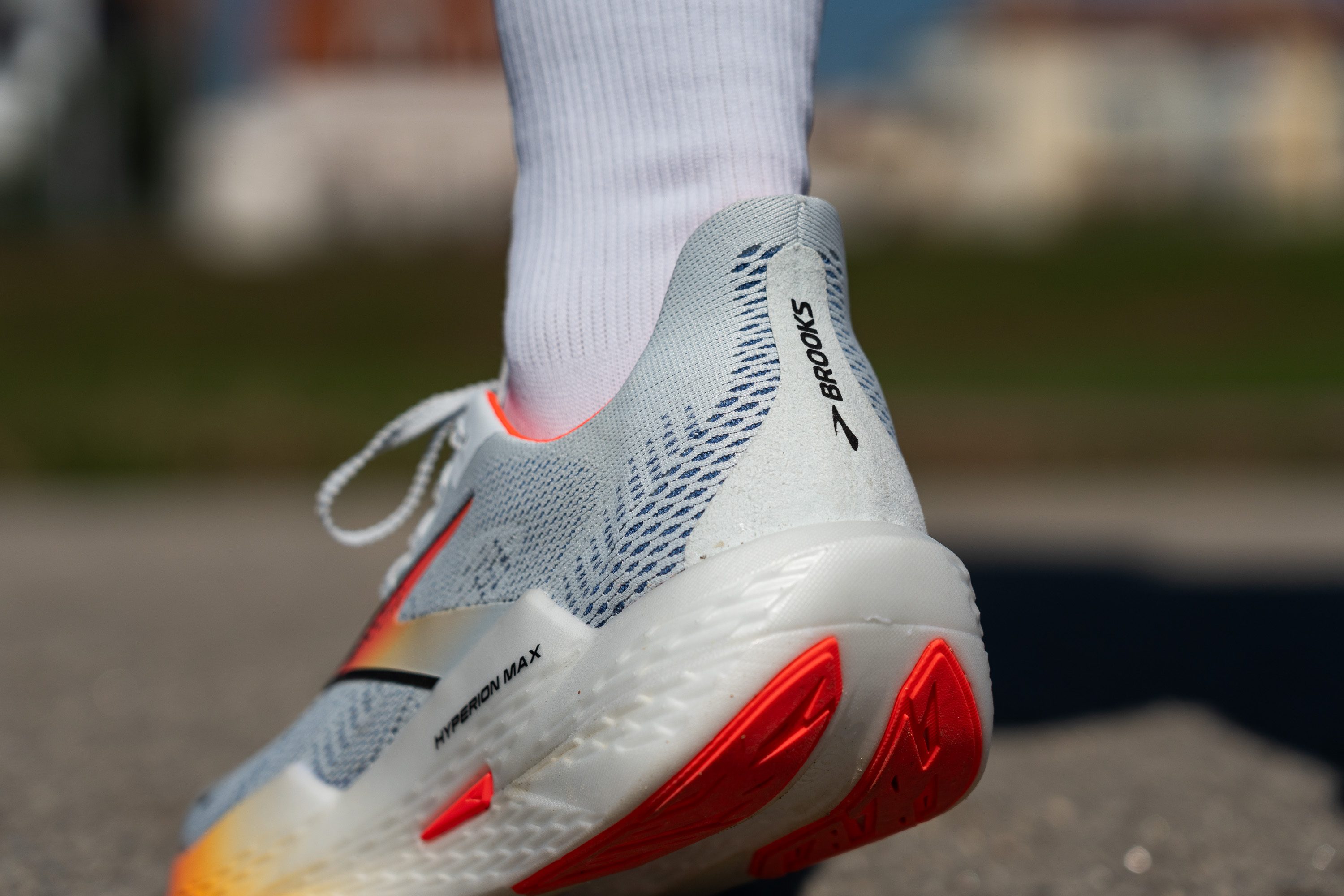
| Hyperion Max 2 | Extended heel collar |

